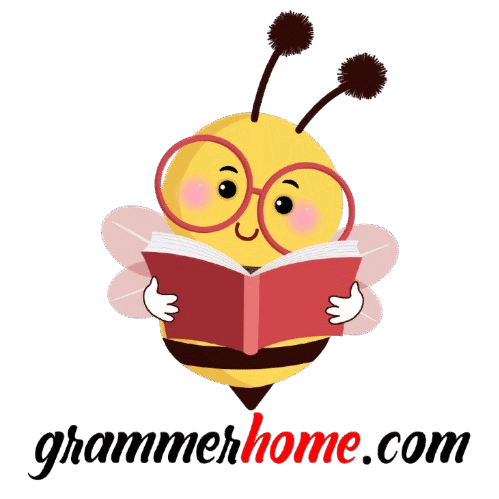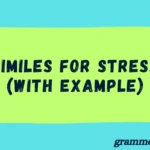Have you ever paused while writing or texting, wondering if you should say “forward” or **“forwards”? Don’t worry—you’re not alone. This tiny ‘s’ can cause big confusion, especially for students, teachers, and anyone trying to master English. Both words seem similar, but there’s a real difference in how and when they’re used—especially when it comes to British vs. American English, formal vs. casual writing, and directional grammar.
Whether you’re a high school student, a college learner, or a professional English teacher, understanding the correct usage of “forward” vs “forwards” will help you write and speak with more clarity, confidence, and accuracy. In this post, we’ll break down their meanings, usage, and grammar rules with real-life examples, clear explanations, and learner-friendly tips to help you move—yep—forward in your English journey.
Why the Confusion Exists
The confusion comes from how English evolved on both sides of the Atlantic. In British English, it’s common to add “-s” to directional adverbs like towards, backwards, and yes—forwards. But in American English, we drop the “s.” That’s why Americans say:
- Go forward, not go forwards
- Look forward to it, not look forwards to it
Both are technically correct, but which one you use depends on your audience and the formality of your writing.
Quick Comparison Table
Let’s get straight to the point with a side-by-side comparison.
| Feature | Forward | Forwards |
| Common In | American English | British English |
| Part of Speech | Adjective, adverb, noun, verb | Adverb only |
| Formality | More formal and standard | More casual |
| Example | “Let’s move forward.” | “He walked forwards slowly.” |
What Does “Forward” Mean?
The word “forward” is incredibly flexible. In American English, it can be used as an:
- Adverb: “He stepped forward.”
- Adjective: “Forward motion”
- Noun: “The forward on the basketball team scored 20 points.”
- Verb: “Please forward me the email.”
It’s also part of many common phrases:
- Fast forward
- Move forward
- Look forward to
- Push forward
In American writing and speech, “forward” is the default choice in nearly every situation.
What Does “Forwards” Mean?
“Forwards” is used almost exclusively as an adverb—and primarily in British English. You’ll hear it in the UK, Australia, and other Commonwealth countries.
Some examples:
- “The car rolled forwards.”
- “She leaned forwards to pick up the book.”
To American ears, adding the “s” may sound outdated or overly British, especially in formal writing.
Grammar Breakdown: Are Both Correct?
Yes, both forms are grammatically correct, but they aren’t used interchangeably in all varieties of English.
In American English, it’s best to stick with “forward” in every context unless you’re quoting a British source.
Why? Because “forwards” just isn’t part of standard American usage anymore.
Usage in American vs British English
Here’s how these forms break down regionally:
| Region | Preferred Form | Notes |
| United States | Forward | Used in all contexts |
| Canada | Forward | Some British influence but still “forward” dominates |
| UK | Forwards | Common in speech and informal writing |
| Australia/NZ | Forwards | Same as UK |
This split also applies to other “-ward” adverbs:
- Toward (US) vs. Towards (UK)
- Backward (US) vs. Backwards (UK)
- Upward (US) vs. Upwards (UK)
Where Each Is Commonly Used
Professional Communication
If you’re writing a cover letter, sending a business email, or submitting a research paper in the United States, use “forward.”
Examples:
- “We look forward to your response.”
- “Moving forward, we expect improvements.”
Educational Settings
Teachers and students should also stick to “forward” in all academic writing:
- “He made forward progress in the class.”
- “The curriculum is looking forward.”
Pop Culture, Sports, and News
In American sports and pop culture, “forward” is the go-to:
- “She’s playing as a forward on the soccer team.”
- “Let’s fast forward to the best scene.”
Example Sentences Using “Forward”
Let’s look at how “forward” works in different roles:
- Adverb: “The crowd moved forward as the doors opened.”
- Adjective: “They developed a forward strategy for growth.”
- Noun: “The forward scored twice in the second half.”
- Verb: “Could you forward me that document?”
This form is polished, simple, and works in both formal and informal writing.
Example Sentences Using “Forwards”
While rarely seen in American writing, here are examples from British usage:
- “He stumbled forwards after the tackle.”
- “The baby crawled forwards on the carpet.”
- “They leaned forwards to hear better.”
These examples highlight how “forwards” is mostly informal and more common in everyday British speech.
Which Should You Use in the USA?
Here’s your golden rule:
In American English, always use “forward.”
Unless you’re writing British fiction, quoting an international source, or teaching English variations, drop the “s.”
Using “forwards” in the US can make your writing seem:
- Old-fashioned
- Too British
- Slightly awkward
Tips for Writers, Students, and Teachers
Whether you’re proofreading an essay or polishing an article, keep these quick tips in mind:
- Use “forward” for all academic, business, and professional documents
- Avoid “forwards” unless you’re following UK style guides
- Don’t mix both forms in the same piece
- When in doubt, choose the simpler, more common form: forward
Synonyms for Forward and Forwards
Sometimes, you don’t even need to use “forward” or “forwards” at all. Try these alternatives based on the tone you want:
Synonyms for Forward
- Ahead
- Onward
- Forth
- In front
- Direct
Synonyms for Forwards
- Onwards
- Forth (older)
- Ahead
| Context | Instead of “Forward” Use… | Tone |
| Motivational | Onward, Ahead | Inspirational |
| Instructional | Direct, Ahead | Clear |
| Formal Writing | Forth, Onward | Elegant |
| Sports/News | Upfield, Offensive player | Practical |
Origin and Etymology
Both “forward” and “forwards” come from Old English—specifically the word “foreweard,” meaning “toward the front.”
- The base “for-” means “in front” or “ahead.”
- Over time, “-ward” endings were used to indicate direction.
The “-s” was added later in Middle English to form adverbs more naturally. However, American English dropped the “s” to streamline spelling and grammar.
Test Your Knowledge
Let’s put it to the test! Fill in the blanks with the correct form: forward or forwards.
- “We’re moving ______ with the new plan.”
- “He leaned ______ to tie his shoe.”
- “The teacher looked ______ to the field trip.”
- “The soccer player was a top-scoring ______.”
- “She walked ______, not looking back.”
Answers:
- forward
- forwards (UK), forward (US)
- forward
- forward
- forward
Conclusion:
So, what’s the final word on “forward” vs “forwards”? Both are correct, but how you use them depends on context, tone, and sometimes even regional differences. If you’re following American English, you’ll usually stick with “forward” in both formal and informal settings. But if you’re leaning toward British English, you’ll often hear or read “forwards”—especially when speaking about movement or direction.
For students, knowing when to use each form can make your writing sharper and your grammar stronger. For teachers, explaining this small but important difference can help learners avoid one of the most common grammar mix-ups. And for everyone else in between, just remember: if it sounds natural and fits the sentence, you’re probably on the right track.
FAQs
Q: Is “forwards” wrong in the US?
Not exactly—but it’s considered nonstandard. Stick to “forward” for clarity and professionalism.
Q: Can “forward” be used as a verb?
Yes! “Please forward me the message.”
Q: Are there other words like this?
Yes! Here are more US vs UK differences:
- Toward (US) vs. Towards (UK)
- Backward (US) vs. Backwards (UK)
- Anyway (US) vs. Anyways (regional, informal)
Q: Is it OK to use “forwards” in fiction?
If you’re writing British English fiction, absolutely. Just be consistent.

Mariah Cannon is the dedicated educator behind GrammerHome.com, committed to making English grammar clear, engaging, and confidence-boosting. With years of teaching experience and a passion for effective communication, Mariah specializes in breaking down complex grammar rules into bite-sized, easy-to-apply lessons.




